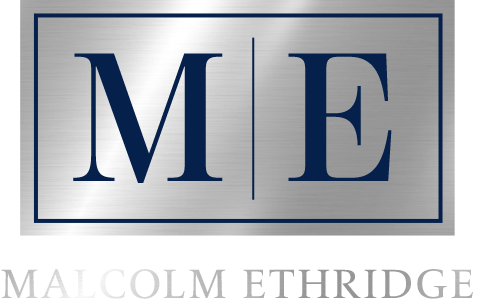The Rothification of Employer Matching and Catch-Up Contributions
If you are a high earner who routinely maxes out your workplace retirement plan every year, you may want to pay attention to some recent changes that will affect the way your employer-matching contributions and catch-up contributions are treated beginning in 2024. Thanks to the newly enacted Setting Every Community Up for Retirement Enhancement (SECURE) Act 2.0, many high-earning retirement savers are in danger of losing some beloved tax breaks.
According to Congress, the SECURE Act 2.0 aims to improve retirement security for millions of Americans by expanding access to retirement plans, increasing savings incentives, and enhancing plan features. However, some provisions may also have significant tax implications for high-income earners who choose to take full advantage of the annual contribution limits for their 401(k) plans. Particularly, the Act introduces two major changes that will affect how employer-matching contributions and catch-up contributions are allocated between traditional and Roth accounts within a 401(k).
Currently, if you participate in a Plan that offers both traditional and Roth options, you can choose whether to make your own contributions on a pre- or after-tax basis. Your employer-matching contributions, however, are always made pre-tax and are deposited into your traditional account, regardless of your own contribution choice. This means that you will only owe income taxes on the earnings of those matching contributions when you withdraw them in retirement.
Starting in 2024, employers will be required to offer the option to elect to deposit some or all matching contributions into a Roth account instead of a traditional one. And if you make this election, the matching contributions will be treated as taxable income in the year they are made. Additionally, these Roth-matching contributions will be immediately vested, meaning that you will have full ownership of them without having to meet any service requirements.
This option may appeal to you if you expect to move into a higher tax bracket in retirement or if you want to diversify your tax exposure across different types of accounts. Nevertheless, you should also consider the impact of paying taxes on your matching contributions upfront, especially if it pushes you into a higher tax bracket or affects your eligibility for certain tax deductions or credits.
Another change that will affect high-income earners who are already maxing out their 401(k) pertains to catch-up contributions. Currently, if you are age 50 or older, you can make an additional $7,500 contribution to your 401(k) account on top of the regular $22,500 limit for 2023. You can decide whether to make a pre-or after-tax catch-up contribution.
Under the SECURE Act 2.0, starting in 2024, if you make catch-up contributions and your wages exceeded $145,000 (adjusted for future inflation) in the prior calendar year, you will be required to make those catch-up contributions on an after-tax basis and deposit them into your Roth account.
This means that many high earners will pay taxes on their catch-up funds up front, presumably during their peak earning years rather than in retirement when they may be in a lower tax bracket. This change will apply regardless of whether you make regular contributions on a pre- or after-tax basis.
While many saving for retirement often assume they will be in a lower tax bracket during retirement, that is not always the case. Many high earners accumulate substantial income in their 401(k) and traditional IRA accounts. And as a result, they often find themselves in the same or higher tax bracket when they reach the age of required minimum distributions, which today is 73 years old.
For years, making catch-up contributions with pre-tax money has been a tax gift for high earners. For example, someone in the 37% marginal tax bracket deciding to make a maximum catch-up contribution of $7,500 would essentially receive a deduction of $2,775.
While these new Rothification rules may initially seem like a penalty for making too much money, there may be a silver lining. Individuals who have saved for retirement using traditional (pre-tax) accounts are required to pay regular income tax upon withdrawal of these funds. Though with Roth accounts, savers are allowed to access those funds tax-free in retirement.
This can be particularly beneficial during years when withdrawing from other accounts might result in a higher tax bracket or increased Medicare premiums. It is important to point out, however, that these changes do not apply to Roth and traditional IRAs, both of which allow savers 50 and over to make a catch-up contribution of $1,000 on top of the $6,500 annual limit in 2023.
Because Roth accounts grow tax-free, they can sometimes be a better option for high-income earners than taxable brokerage accounts which require taxes to be paid on any dividends, interest, and capital gains. Having retirement savings in both traditional and Roth accounts acts as a hedge against uncertainty over future income taxes. And with the US debt and deficit ballooning, many economists predict federal taxes will rise in the coming decades. Roth accounts protect against this eventuality.
The key to success is maximizing the benefits of this policy change within your overall retirement plan. It is important to review your plan to ensure your savings strategy aligns with your goals and future tax situation. With the right approach, these new Roth rules may prove beneficial in the long run.
********************
Malcolm Ethridge, CFP® is the Managing Partner of Capital Area Planning Group based in Washington, DC. He is also the Managing Partner of Capital Area Tax Consultants.
Malcolm’s areas of expertise include retirement planning, investment portfolio development, tax planning, insurance, equity compensation and other executive benefits.
Disclosures:
The information provided is for educational and informational purposes only, does not constitute investment advice, and should not be relied upon as such. Be sure to consult with your legal advisors before taking any action that could have tax and legal consequences.
Investments in securities and insurance products are:
NOT FDIC-INSURED | NOT BANK-GUARANTEED | MAY LOSE VALUE
